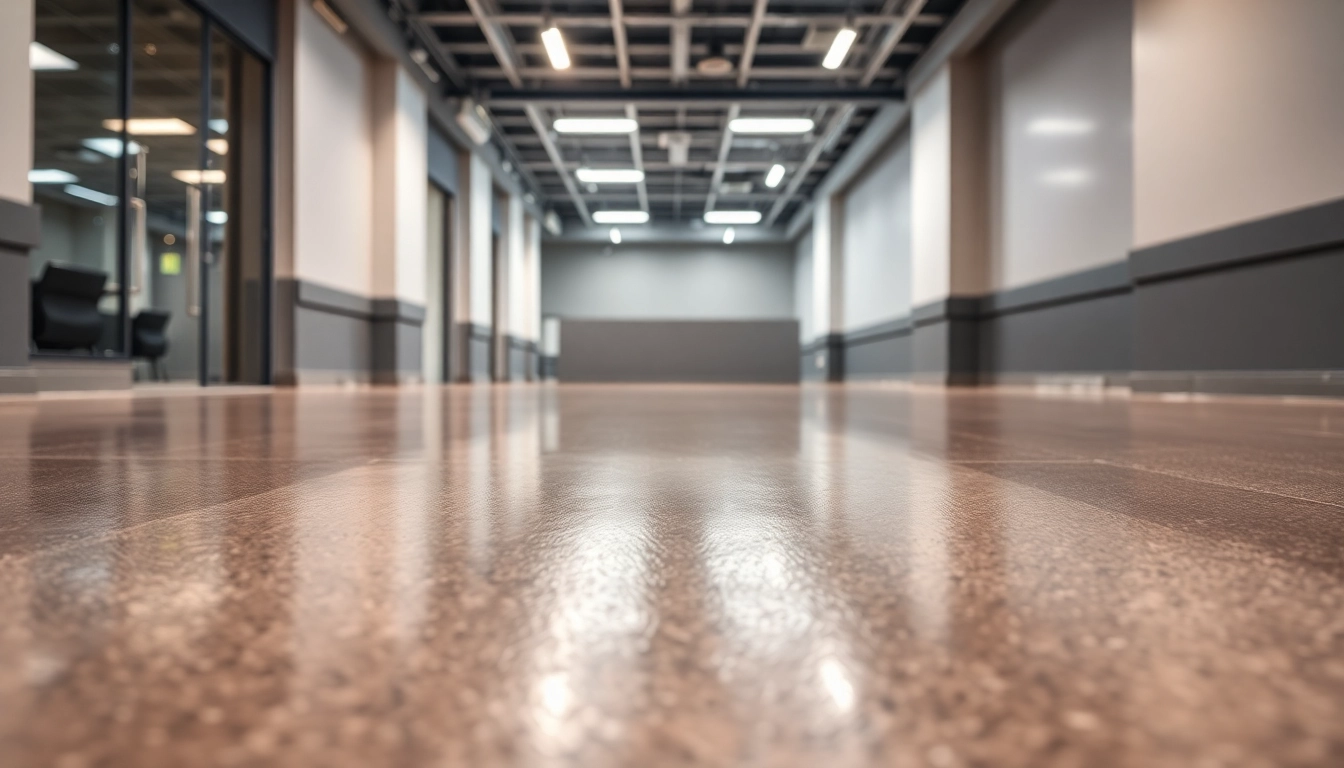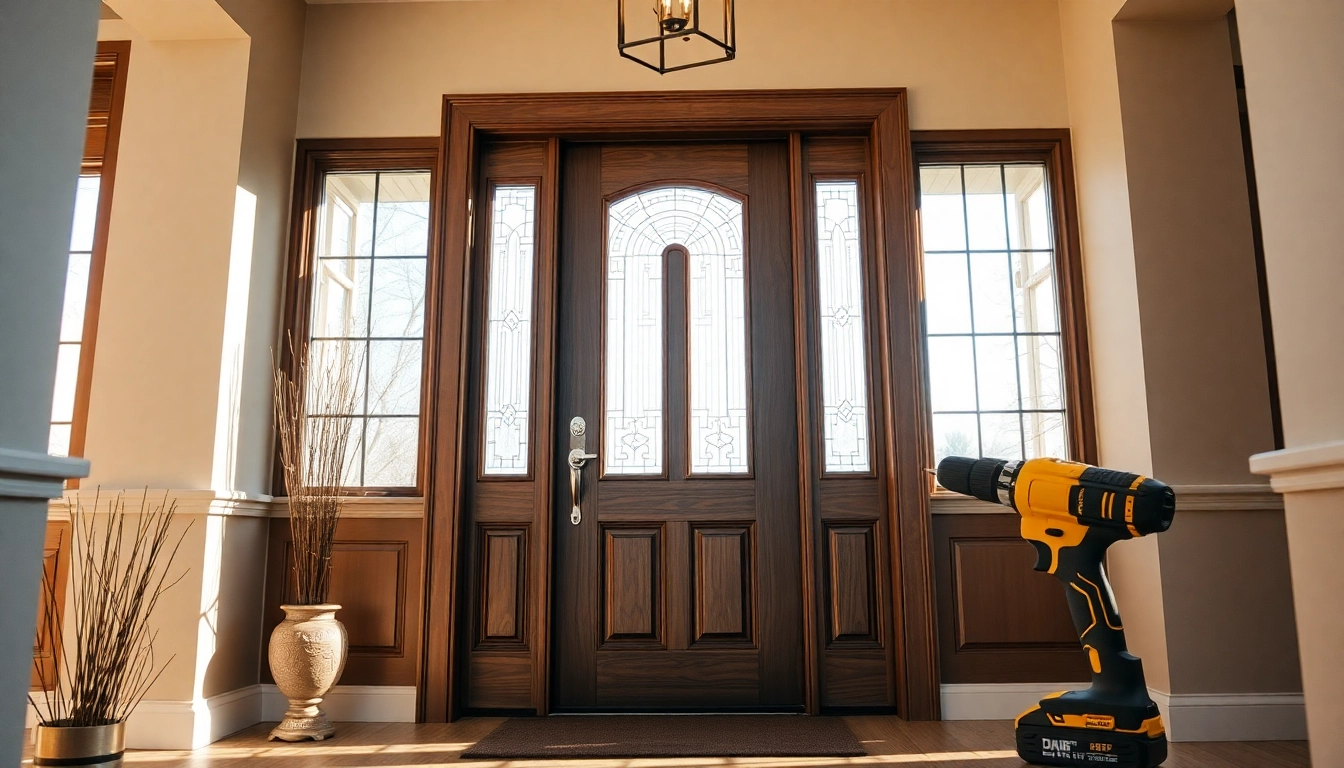Understanding Epoxy Resin Floors: Features and Benefits
Epoxy resin floors have become a go-to choice for both commercial and residential spaces due to their outstanding durability, aesthetic appeal, and ease of maintenance. Whether you’re renovating a garage, transforming a warehouse, or upgrading a retail outlet, an epoxy resin floor can provide a seamless, high-performance surface that stands the test of time. For those interested in learning more or considering a project, exploring the epoxy resin floor options and installation processes can help ensure a successful outcome.
What is an Epoxy Resin Floor?
An epoxy resin floor is a surface coating made from a mixture of epoxy polymers that chemically bond to concrete or other substrates, creating a hard, durable, and seamless finish. These floors are formulated to resist scratching, chemical spills, abrasion, and impact, making them ideal for demanding environments. The epoxy coating is often applied as a thin or thick layer, depending on specific performance requirements, and can be customized with colors, textures, and decorative effects.
Advantages of Epoxy Resin Flooring in Commercial Spaces
Epoxy resin flooring presents numerous benefits, especially in commercial settings. Key advantages include:
- Exceptional Durability: Epoxy floors are highly resistant to wear and tear, making them suitable for high-traffic areas like warehouses, factories, and retail spaces.
- Chemical Resistance: They withstand exposure to oils, acids, and cleaning agents, maintaining their integrity over time.
- Ease of Maintenance: The seamless surface prevents dust and debris accumulation and simplifies cleaning routines.
- Enhanced Safety: Incorporating slip-resistant textures and coatings reduces the risk of accidents.
- Professional Appearance: The glossy finish can be tailored to match branding or aesthetic preferences, creating an inviting environment for customers and staff.
Common Applications and Industries
Epoxy resin floors find application across diverse sectors, including:
- Industrial Warehouses: For heavy machinery and storage areas that require robustness.
- Commercial Kitchens: Due to their chemical resistance and ease of cleaning.
- Retail Outlets and Showrooms: For aesthetic appeal and seamless flooring.
- Healthcare Facilities: Because of their hygiene-friendly surface.
- Residential Garages and Basements: Offering durability and a modern look.
Design Options and Customization of Epoxy Resin Floors
Color Choices and Finishes
One of the standout features of epoxy floors is their versatility in design. They come in a spectrum of colors—from subtle neutrals to bold hues—and can incorporate metallic pigments for a dynamic, high-end appearance. Finishes range from matte to high-gloss, with options for semi-gloss or textured coatings, depending on functional needs and stylistic preferences.
Marble and Decorative Effects
Epoxy allows for creative decorative effects, including marble-like swirls, terrazzo patterns, or embedded graphics. These effects are achieved through techniques such as pigmented overlays or the addition of decorative aggregates, providing a sophisticated and personalized finish suited for upscale businesses or showrooms.
Texture and Slip-Resistance Features
For safety-critical applications, epoxy floors can be customized with textured coatings or decorative aggregates to enhance slip resistance. This is particularly beneficial in aqueous environments like kitchens, bathrooms, or outdoor areas, where reducing slip hazards is paramount.
Step-by-Step Guide to Installing an Epoxy Resin Floor
Preparation and Surface Cleaning
The success of an epoxy installation hinges on surface preparation. The existing concrete must be thoroughly cleaned, free from dust, grease, oil, and loose debris. Mechanical methods such as shot blasting or diamond grinding are recommended to create a profile that ensures optimal adhesion. Moisture content should also be tested, as excessive moisture can compromise the bond.
Mixing and Application Techniques
Epoxy components are typically mixed in precise ratios, often requiring meticulous attention to ensure a uniform consistency. Using a roller or squeegee, the mixture is applied in coats, starting from one corner and working systematically across the surface. For decorative finishes, techniques like feathering or swirling pigments can be employed during application.
Curing, Finishing, and Maintenance Tips
Once applied, epoxy floors need adequate curing time, which varies from 24 to 72 hours depending on the product and environmental conditions. During this period, it’s essential to prevent foot traffic or any contact that could damage the finish. After curing, applying a topcoat enhances gloss, durability, and resistance to scratches. Routine maintenance involves sweeping or vacuuming and occasional mopping with mild detergents to preserve their appearance and functionality.
Choosing the Right Epoxy Resin System for Your Needs
Commercial vs. Residential Epoxy Options
Commercial epoxy systems are formulated for higher load capacity, chemical exposure, and longer lifespan, making them suitable for industrial environments. Residential options tend to be thinner, more decorative, and easier to install, suitable for home garages, basements, or patio areas.
Factors Influencing Material Selection
When selecting an epoxy system, consider factors such as environmental conditions, expected traffic volume, chemical exposure, and desired appearance. For example, a high-traffic warehouse might require a heavy-duty, impact-resistant epoxy, while a boutique retail store might prioritize aesthetic options like metallic or decorative finishes.
Cost, Durability, and Long-Term Performance
Pricing varies based on the epoxy type, thickness, and decorative elements. Investing in high-quality, durable formulations initially might entail higher costs but ultimately reduces maintenance and replacement expenses. Proper installation and regular upkeep ensure that the epoxy floor maintains its integrity and appearance over years.
Best Practices and Troubleshooting for Epoxy Resin Floors
Common Installation Challenges and Solutions
Issues such as bubbling, uneven surfaces, or delamination often stem from improper surface preparation or environmental factors like temperature and humidity. To mitigate these, always follow manufacturer guidelines, ensure optimal conditions during installation, and use professionally recommended primers or sealants.
Ensuring Smooth and Even Coats
Achieving a flawless finish involves mixing components thoroughly, applying coats with proper techniques, and maintaining a controlled environment. Using tools such as squeegees, rollers, and spiked shoes for self-leveling can greatly improve surface smoothness and finish quality.
Maintenance and Repair Strategies
Long-term maintenance includes routine cleaning, addressing minor damages promptly, and resealing when necessary. For cracks or chips, epoxy patching compounds can restore the surface. Periodic recoating maintains protective qualities and aesthetic appeal, especially in high-use areas.












